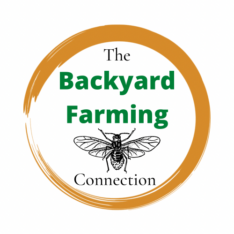This website is here to help you turn your backyard into a highly-functioning food-producing, intensive gardening and farming space. But what about all those corners and borders and small areas that aren’t being used to garden or house animals? Don’t overlook the idea of creating a wild yard or natural space in your backyard.
With the exception of all those folks who are truly farming on a postage sized space, there are likely many parts of your yard that are not being used directly for raising food and animals. These underutilized spaces usually become storage, lawn, or unwanted garden simply because you’re not sure what to do with the space and keep it attractive. Consider converting these a areas into a wild yard with natural spaces full of native plants that will provide natural habitats for animals, replace lawns, and create an attraction border to your yard.
As an Amazon Associate I earn from qualifying purchases.
Contents
1. Provide Natural Animal Habitat in Your Wild Yard
While providing a happy, healthy habitat for your barnyard animals is important to the backyard farmer, don’t forget the wild animals. With the destruction of many natural spaces, many birds, butterflies, bees, and mammals struggle to find natural food and native habitats. Many of these animals are directly important to you garden, and many are simply part of the greater system. Take the corners, strips, patches and other areas that you aren’t using in your yard and allow them to re-establish as natural habitats for animals.
If you want color, plant wildflowers, if you want a barrier, allow the trees to grow up and become an area for nest and protection. Remember that most of the animals will prefer native plants, so look in the fields around and local nurseries to find plants that are indigenous to your area. Since invasive plants are a problem in many area, you may need to pull out what grows naturally and re-introduce native plants.
Many animals prefer a variety of vegetation types. Consider keeping some area as a wildflower field and allow other area to fill in with bushes and trees. You can also establish a more formal butterfly or bee garden.
For more ideas of attracting wildlife, check out this article.
2. Replace Your Lawns
Having a big lawn may be an American tradition, but lawns use a huge amount of fertilizers, pesticides, and cause a significant amount of run-off. While some lawn space may be a welcome space to play ball or run, look carefully at what parts of your lawn could be replaced by wild areas. These natural spaces do not need maintenance, pesticides or fertilizers and will actually lower the amount of work in your yard.
One of the best parts of creating a natural area in your yard (besides all the animals it will attract) is that you can leave the area with logs, sticks, and leaves right where they fall!
Still want a lawn? Check out some tips on creating an eco friendly lawn.
3. Create Beautiful Natural Barriers
Natural areas make wonderful transitional spaces from your yard to the woods, or alongside your driveway. These areas often include brightly colored flowers and are frequented by butterflies and birds. Don’t get caught up in the impression as these areas as ugly, unorganized, messy spaces.
Barriers also work as buffers and can help collect water and filter nutrients. If you have a portion of your yard that gets a lot of runoff, consider leaving the area at the bottom natural, especially if it’s along a pond or other water source. This helps filter slow down water flow and filter out sediments and any extra nutrients.

4. Natural Space Becomes a Place to Play
Leaving part of your yard natural creates the perfect place for kids to play. You can work this area into the design for a children’s garden or simply keep it natural. Children are drawn to these corners where they can create and play.
5. How to Create Natural Space
It’s funny to think about creating natural space or a wild yard – don’t you simply do nothing and natural space will appear. While this is certainly one approach, there are many things you can do to encourage and even alter the natural spaces in your yard.
Think about the soil… Many yards have bad soil unlike a natural wooded or fielded space. Consider adding a little soil or compost to get the natural space underway, especially if you are trying to plant windflowers. Once you area is established allow leaves and other debris to fall and turn back into soil.
Choose a habitat… Depending on the space or your plans, you can create a wildflower field, a series of bushes and brambles, or a wooded region.
Select native plants… Visit nearby forests, fields and local nurseries to determine what plants to grow. You can even pick plants to attract certain animals, such as milk weed to attract monarch butterflies.
Remember water and shelter… If your main goal in creating natural spaces is to attract animals, consider adding some water and places for protection. Birds or bat houses make wonderful additions to a natural space.
Even though our home is surrounded by woods, this year we are consciously selecting several unused areas of our yard to convert into natural spaces. We’re looking forward to seeing what grows, and hopefully encouraging some wildflowers. Do you have natural spaces in your yard? What benefits do you get from letting part of your yard stay natural?






We’ve never been fans of a huge expansive lawn. This is a great post. Thank you for sharing, look forward to what you bring tomorrow: http://blackfoxhomestead.com/the-homeacre-hop/